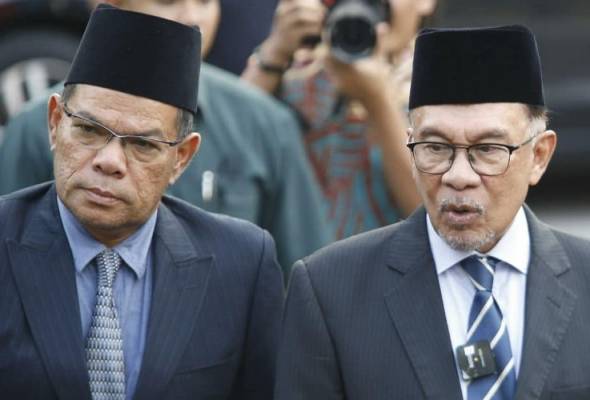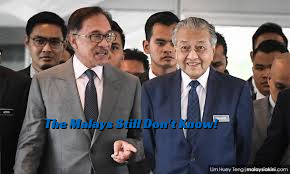Yes, there were concessions. But the real story proves this wasn’t capitulation — it was strategy. We were corrected by contemporaries in Washington whose views are that Tengku Zafrul deserves credit. He pulled off a masterclass in quiet Diplomacy, Sovereignty, and the Art of the Soft Concession.
On August 1st, 2025, something unexpected happened. Malaysia, which just weeks earlier was staring down the barrel of a punishing 25% tariff imposed by the Trump administration, suddenly found itself in the 19% tariff category — grouped with other ASEAN nations like Indonesia and Cambodia. No official announcement was made heralding a new agreement. No fanfare. No victory lap. Just a subtle shift on the tariff rate sheet issued out of Washington. To many observers, (including us), it looked like a bureaucratic mistake.
We have to admit that this was not an oversight. It was no mistake. Tengku Zafrul deserves credit. it was the result of a quiet, strategic, and very Malaysian form of diplomacy. We were corrected by contemporaries in Washington who claim that Tengku Zafrul pulled off a masterclass in quiet diplomacy, sovereignty, and the Art of the Soft Concession.
How Did We Get Here?
In early April 2025, President Trump launched a sweeping set of import tariffs under the “Liberation Day” initiative. Malaysia, among others, was hit with a 24% levy on all goods entering the U.S. Effective April 9, the move was widely criticized within Malaysia and Kuala Lumpur sought immediate negotiations.
Negotiations, however, hit a wall. Malaysia refused to compromise on its deeply entrenched “Bumiputra First” economic policies, citing sovereignty and social equity. The Trump administration responded by raising the tariff to 25% on July 7, effective August 1.
And yet, when August 1 arrived, the revised tariff schedule showed Malaysia listed under the 19% tier, not 25%. What changed?
So Why Is Malaysia Suddenly Listed at 19%?
Because President Trump issued an amendment on July 31, 2025, authorizing country-specific adjustments to the original rates—based on economic diplomacy and newly negotiated commitments.(Sullivan & Cromwell)
Under this amendment:
- The rates in Annex I remained the baseline.
- But the amended Executive Order – EO 14257 – explicitly allowed the administration to lower tariffs if countries showed credible alignment on strategic trade, investment, or concessions.
- Malaysia’s new 19% rate replaced the previously scheduled 24%/25% rate as part of these adjustments.(The White House, Trade Compliance Resource Hub)

Executive Order 14257
Timeline Breakdown
- April 2, 2025: EO 14257 establishes the first set of reciprocal tariffs; Malaysia set at 24% in Annex I.
- April–July 2025: The U.S. delays enforcement twice (via EO 14266 and another order), extending negotiation windows until August 1. (Plante Moran)
- July 31, 2025: A new executive order (amending EO 14257) takes effect—adjusting Malaysia’s rate downward to 19%, effective August 1, contingent on Malaysia’s compliance and aligned economic commitments. (BERNAMA)
- August 1 or effective August 8 (depending on goods in transit), multiple reliable sources confirm Malaysia, along with Cambodia, Indonesia, Thailand, and the Philippines, was listed at a new 19% rate. (BERNAMA)
What This Means
- Annex I’s 24% was the original scheduled rate—never retroactively changed.
- The July 31 amendment effectively overrode Annex I for Malaysia by invoking the executive’s built-in flexibility.
- The US used the recalibration to signal selective diplomatic rewards without upending the entire framework. Countries like Malaysia that made strategic commitments – investment, LNG purchases, regulatory shifts—qualified for a lower rate.
What Malaysia Did Right
Contrary to early speculation, Malaysia did make key moves. The concessions weren’t sweeping, nor did they betray the nation’s core economic principles. But they were enough.
- Strategic Phone Diplomacy: Prime Minister Anwar Ibrahim placed a direct call to President Trump in the days before the August 1 deadline. That call, reportedly cordial but candid, laid the foundation for an off-the-books understanding.
- Selective Sectoral Exemptions: Malaysia secured 0% tariffs for key industries such as pharmaceuticals and semiconductors — critical for both U.S. supply chains and Malaysia’s high-tech aspirations.
- Targeted U.S. Investment Deals: Malaysia committed to purchasing $3.4 billion worth of U.S. LNG annually and agreed to channel over $70 billion into U.S.-linked infrastructure and technology projects over five years.
- Digital Economy Concessions:
- Malaysia quietly dropped revenue-sharing requirements that would have affected U.S. social media and cloud platforms.
- The government scrapped plans for a digital services tax that would have disproportionately affected U.S. tech giants.
- DNS routing policies that previously required localization were rolled back, giving U.S. cloud operators greater freedom.
- Transshipment Crackdown: To align with Trump’s broader war on Chinese supply chain circumvention, Malaysia committed to tightening rules to prevent transshipment of Chinese goods through its ports and free trade zones.
The Tech Concessions On US Based Social Media
- Revenue-Sharing for U.S. Tech Platforms Was Dismantled
Previously, Malaysia had proposed that U.S.-based social media and cloud service providers—including giants like Google, Meta, and Amazon—must contribute 6% of their Malaysian revenues into a mandatory government-led connectivity fund through a Universal Service Provision (USP) scheme. This was widely seen as a revenue-sharing mechanism that disproportionately targeted foreign platforms. However, in the final trade negotiation phase tied to the U.S. tariff re-calibration, Malaysia removed this requirement entirely.(Reuters)
- Digital Services Tax (DST) Plans Were Shelved
In January 2020, Malaysia implemented a 6% Service Tax on Digital Services (SToDS) which rose to between 7–8% in 2024. The tax applied not only to consumer-facing services but also B2B transactions, compounding costs across supply chains (ITIF). During the trade talks, Malaysia paused further expansion or tightening of this digital services tax, effectively easing the regulatory burden on U.S. tech platforms.
- DNS Data Localization Policy Was Reversed
Malaysia had introduced infrastructure-related rules requiring that all DNS (Domain Name System) traffic be routed through domestic Malaysian DNS servers—a move seen by many as an attempt to increase state surveillance and control over internet traffic. That re-routing mandate has been suspended following negotiations, easing compliance burdens on U.S.-based cloud and telecommunication providers.(Reuters)
Why These Changes Matter
These “tech concessions” were not about ceding sovereignty. Rather, they were strategic, limited adjustments that offered clear benefits to U.S. service providers while preserving Malaysia’s core domestic policy positions like Bumiputra Priority and fiscal autonomy.
Bottom Line :
- Not a clerical error or accidental tariff slip (as we had initially thought) —the 19% rate was an executive choice based on Malaysia’s selective compromises.
- It was a win-win: Malaysia avoided catastrophic rates, while the U.S. keeps its trade leverage in place and claims victory narrative.
- The key to outcomes like this in Trump’s approach is public toughness paired with private calibration.
Malaysia’s Boeing Purchase: NOT A Fresh Deal. Just Planned Fleet Upgrades.
Malaysia’s pledge to buy 30 Boeing 737 MAX jets was indeed announced prior to the tariff negotiations, and not originally a trade‑concession quid pro quo. However, the deal was reaffirmed and publicly linked to the tariff talks during the August 1 announcement.
Timeline and Context
March 21, 2025
- Malaysia Aviation Group (MAG) confirmed a firm order for 30 Boeing aircraft (18 737 MAX 8, 12 MAX 10), with delivery scheduled between 2025 and 2030, plus options for up to 30 more (Reuters).
August 1–2, 2025
- During the tariff cut announcement (19% rate), Trade Minister Tengku Zafrul reaffirmed that Malaysia was committed to purchasing an additional 30 Boeing aircraft, valued at approx. US$9.5 billion, describing it as part of broader bilateral commercial commitments (nationthailand).
- He clarified that this reaffirmation aligned with the reciprocal negotiations, but emphasized the deal itself was part of Malaysia’s long‑term fleet modernization strategy, not newly negotiated under duress (The Star).
So while the Boeing deal wasn’t born from the tariff negotiations, it became a public symbol of commercial cooperation. Trump’s team could claim Malaysia voluntarily boosted U.S. high-value exports—and Malaysia could reinforce its fleet renewal narrative without appearing weak.
How These Concessions Were Framed
While none of these adjustments were formally introduced as tariff-linked requirements, they were publicly reaffirmed during the negotiation window. According to Malaysia’s Trade Minister Tengku Zafrul Aziz, these policy shifts were part of Malaysia’s alignment with U.S. trade interests, effectively demonstrating goodwill without compromising national policy.(Reuters, ccianet.org, Reuters, ITIF, Reuters)
That allowed Washington to claim credit: U.S. tech platforms got a better operating environment, and the Trump administration could frame the narrative as successful trade diplomacy. At the same time, Malaysia never presented these as cave-ins to American demands. Instead, they appeared as domestic policy tweaks—flexible, limited, and targeted.
What the U.S. Got in Return
From the White House perspective, Malaysia’s concessions were more than symbolic. They achieved multiple objectives:
- Protected American tech companies from digital protectionism.
- Delivered a public narrative that Trump had once again made a foreign government bend.
- Sent a message to China that transshipment loopholes were closing across Southeast Asia.
And by placing Malaysia in the same 19% tariff tier as regional peers, the Trump team also made the move politically digestible for U.S. audiences and businesses.
Malaysia didn’t announce any “deal” publicly because it didn’t want to appear to have caved. Washington didn’t trumpet the revision because it didn’t want to appear to have backed down. The result: a textbook case in face-saving diplomacy.
Final Word
Malaysia managed to secure both domestic pride and international relief.
Whether or not the reduction from 25% to 19% is a good deal, is debatable. But, it has saved thousands of export-dependent Malaysian jobs, kept inflation in check, and stabilized investor sentiment. At a time when trade wars are fought with tweets and headlines, Malaysia chose quiet maneuvering over confrontation. And it worked. Now, the question is – can Tengku Zafrul maneuver the rate down to the base rate of 10%? We think it can be achieved – https://www.azeanventures.com/post/malaysia-s-moment-leading-asean-toward-a-trillion-usd-stablecoin-future
Call it what you will — diplomacy, pragmatism, or realpolitik — but one thing is certain:
Tengku Zafrul, on behalf of Malaysia, just gave the world a masterclass in how to stand your ground while still walking away with the deal you need.





